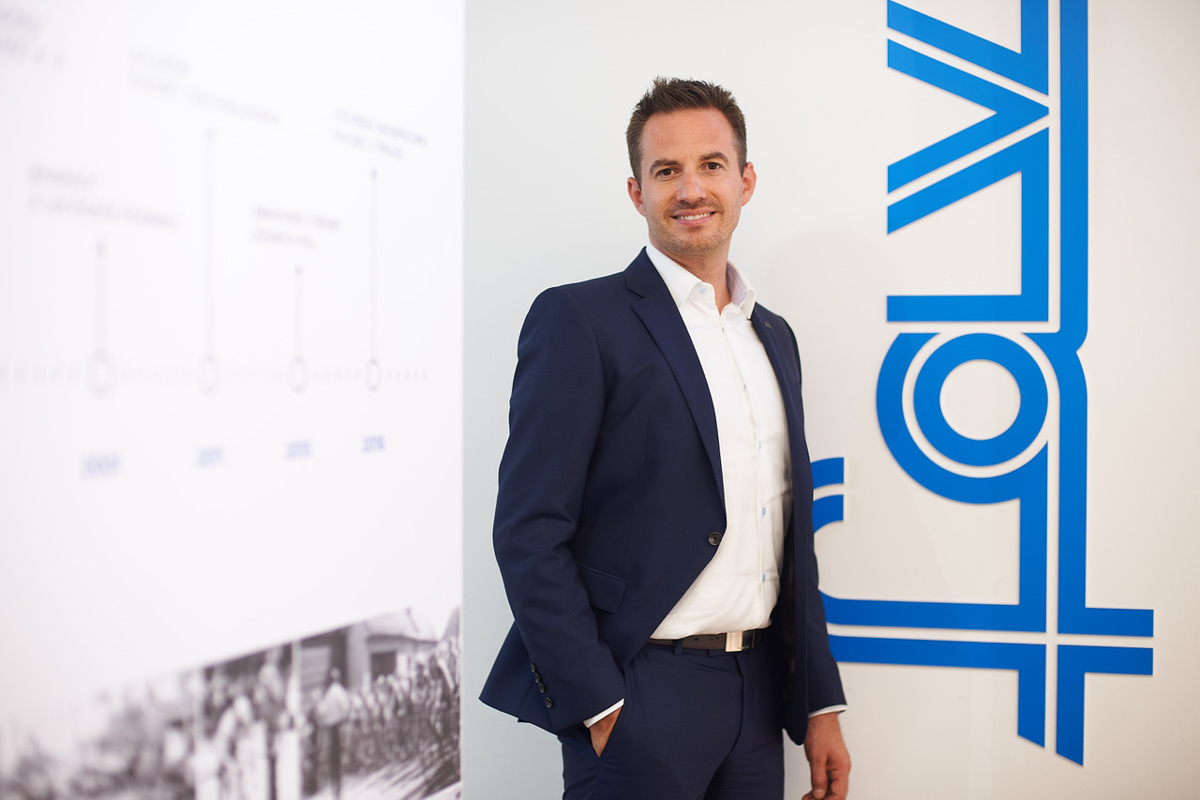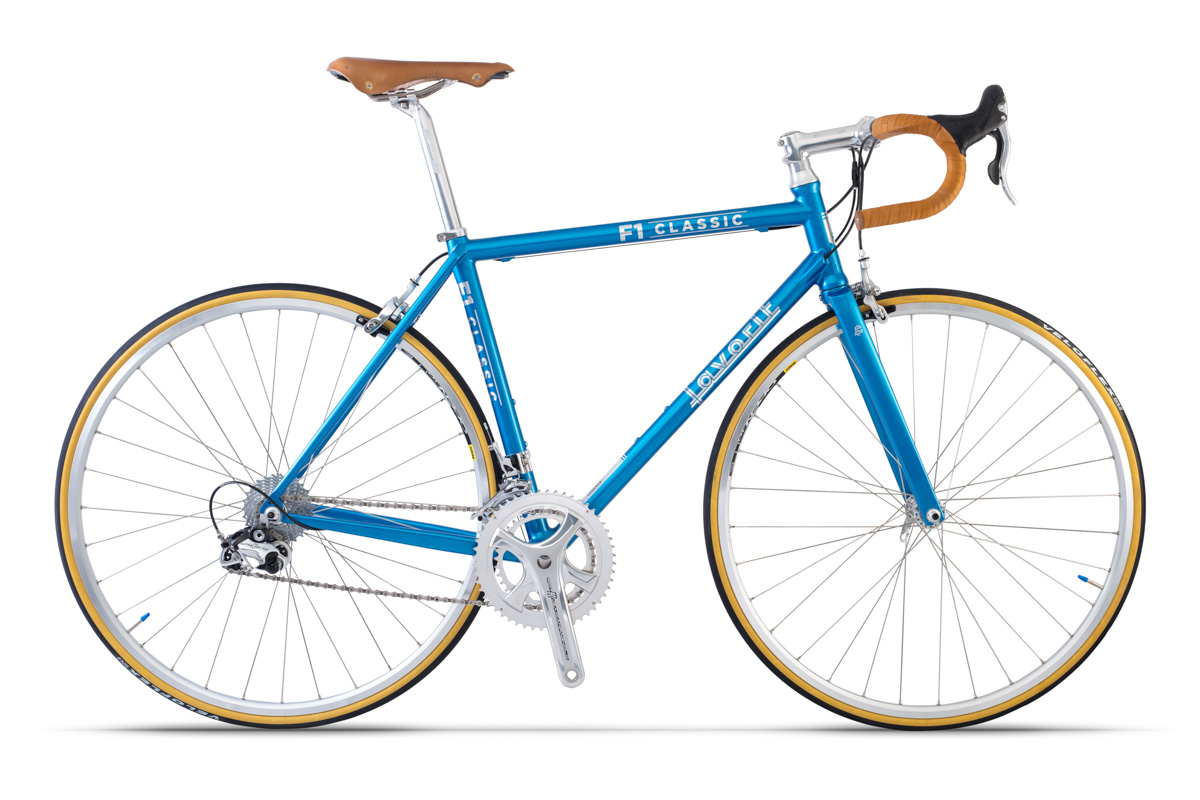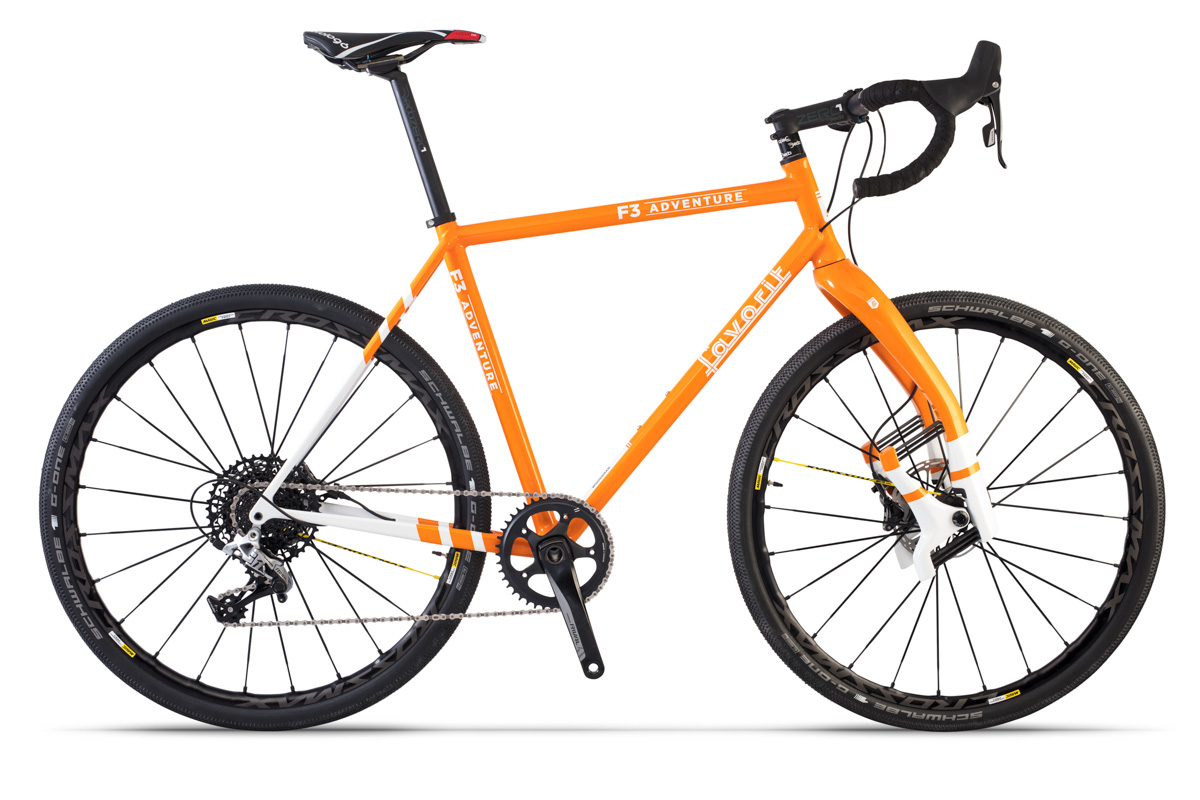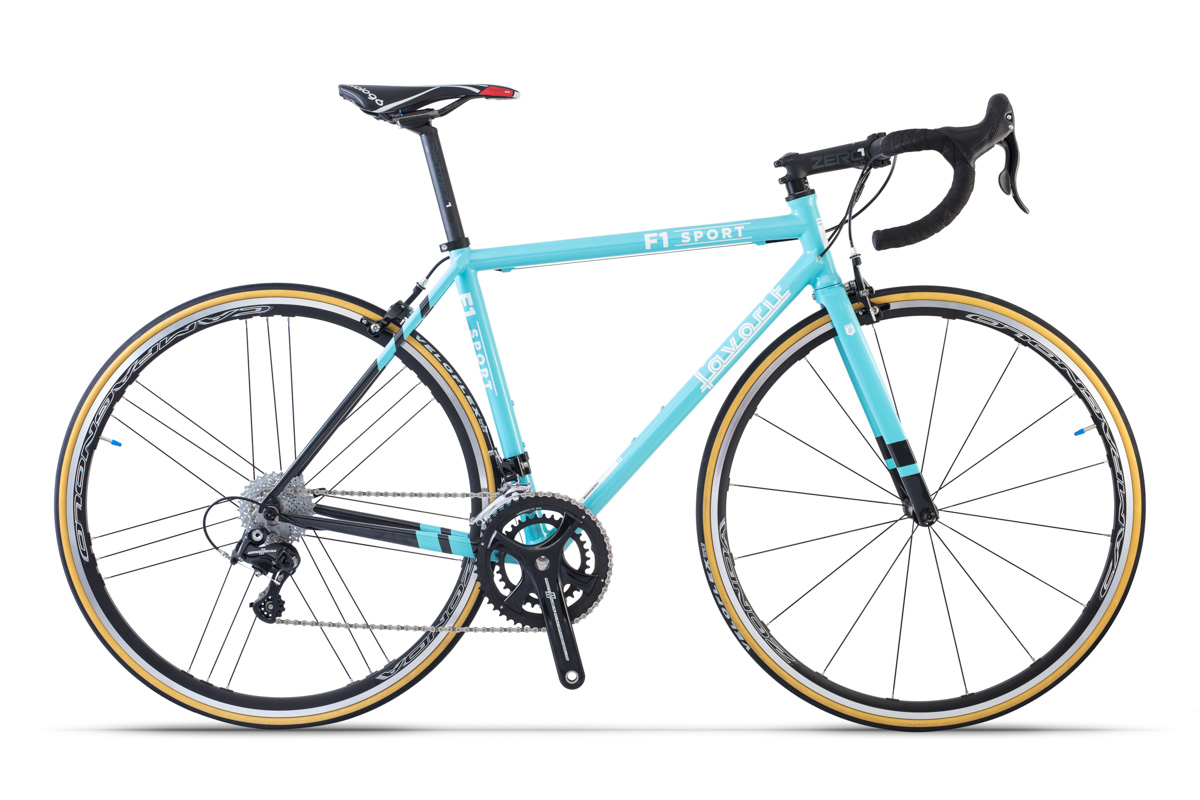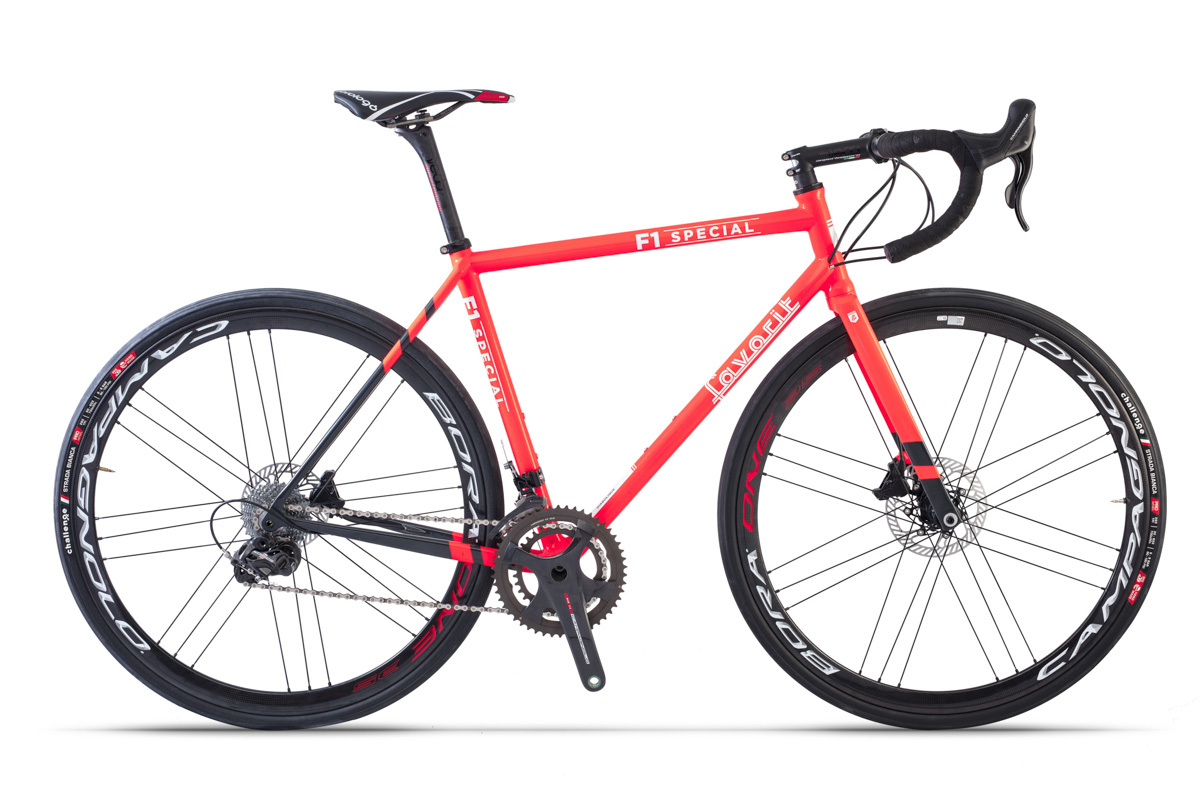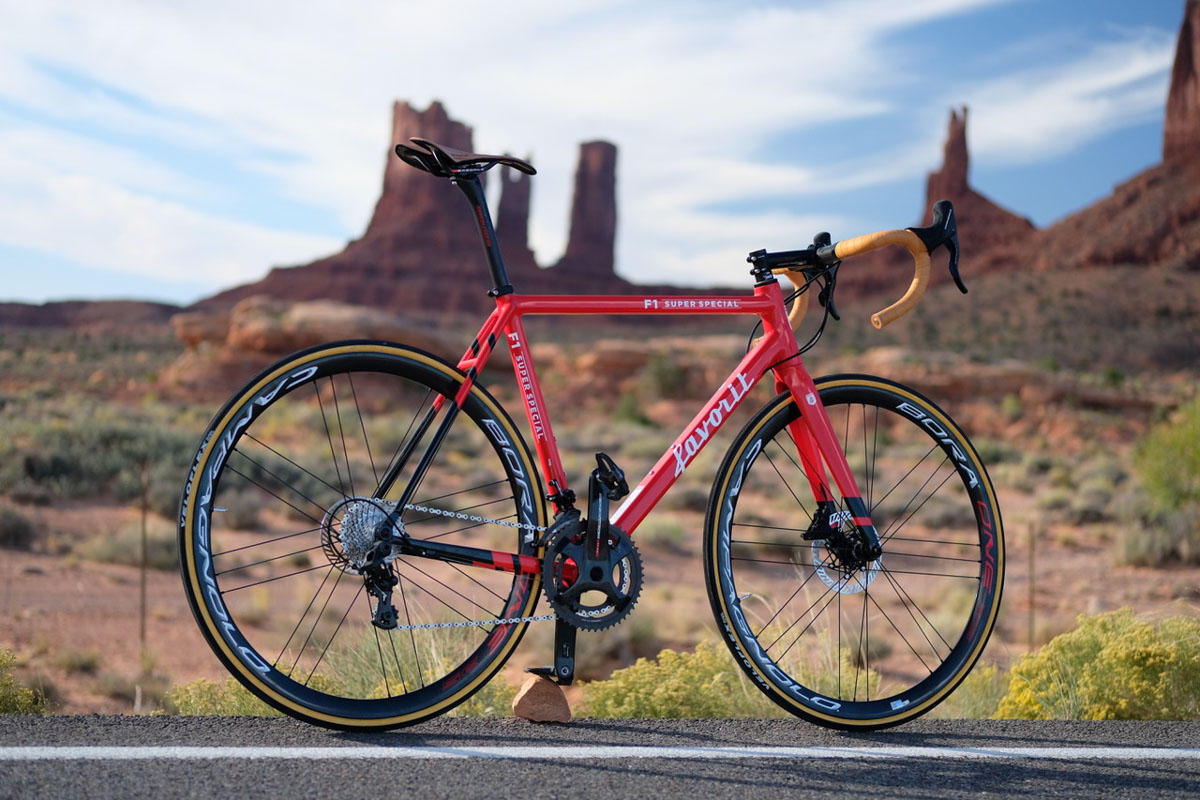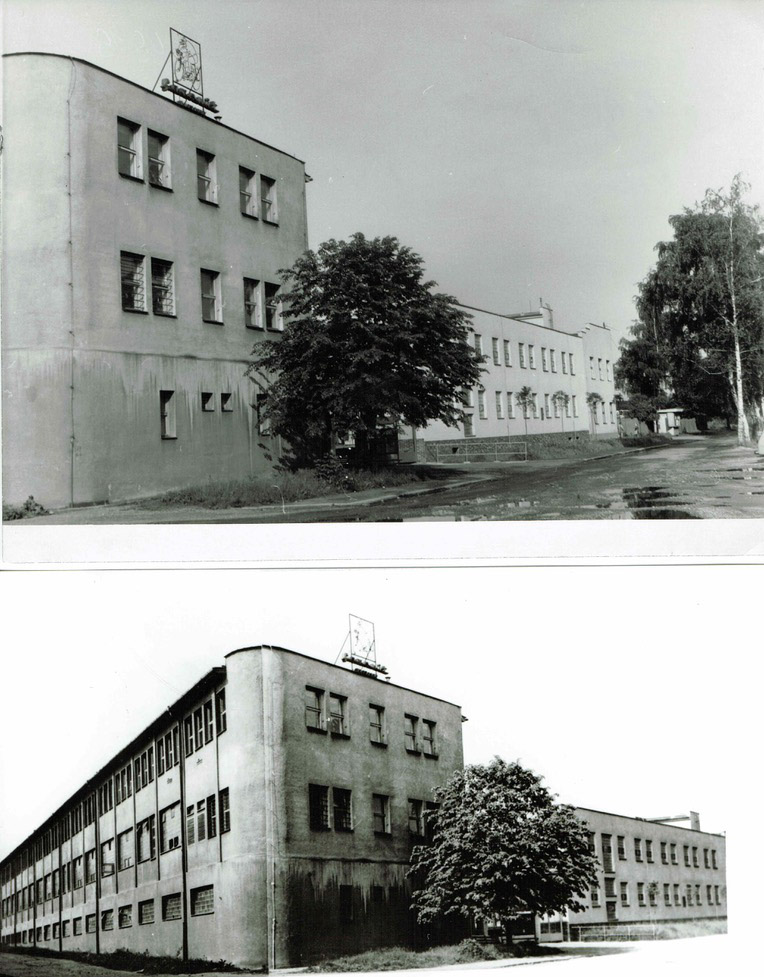In the early 2000’s, the prize of Czech cycling manufacturing and sport was in decline. Favorit, the brand that had grown to fame for its beautiful domestically-built casual bicycles along with the elite Super Special machines Czechoslovakian Olympians and World Champions had raced to gold medals decades earlier, was importing inexpensive, generic frames from overseas.
Enter Richard Galovic, mechanical engineer and cycling enthusiast. Armed with a vision for a fresh, new Favorit, Richard and a team of talented designers, process engineers, and composites experts set to work to rebuild and restore the brand to its former glory. The resulting product is beautiful, technologically clever, highly integrated, and custom on a deep level.
In this interview, taken at Interbike, Richard discusses the new brand direction, as well as the challenges of relaunching a 20th century brand in the 21st century.
BIKERUMOR: Let’s talk about where the story starts with you. You acquired the brand in 2011. Up until that point, was it exclusively steel?
RICHARD: There was a transition period where the previous owner, in between the years of 2001 and 2010, he was bringing frames usually from Asia in aluminum and steel and painting them. He didn’t produce frames or components in original factory. The average price of the bike was around $100. Which was a disaster.
BIKERUMOR: How did you feel about that? You’re a cyclist. You’re passionate about bikes. That must have been heartbreaking to see this iconic brand, as a countryman, to watch this brand collapse into just a name and foreign made bikes.
RICHARD: It was a really sad feeling. Humiliating. Czechoslovakia in former times was a very advanced country. In between the World Wars, it was the third most developed country in the world. Our industry and economy after the First World War was, this was before communism, was very rich. We were lending money to other countries. We helped many western countries to build up after the World War. Of course communism in late 70’s and 80’s was not so efficient. Western countries were moving rapidly forward. And in 1985 or 1986, Czechoslovak government decided that they might import bicycles from other countries to Czechoslovakia.
BIKERUMOR: Wait, they hadn’t imported bicycles before then?
RICHARD: Before then, yeah. Therefore, they invested a huge amount of money to Favorit to be one of the best bicycles in the world, to win Olympic Games. It was like a national treasure. In one factory they made everything, all the components. Cranks, brakes, chainwheels, everything was produced in the factory, including frames.
BIKERUMOR: My understanding of Soviet Bloc countries in that era as far as bicycle production is concerned is that the infrastructure was created very deliberately – like we’re going to do this because we are amazing people. We’re going to make the best stuff, we’re going to throw all of our power behind it. In other places, the infrastructure made it very challenging to import parts or components from western countries, so they had to make their own components. It was out of need. What was it for Favorit?
RICHARD: It is a combination of those things. In Czechoslovakia, they produced a bicycle that they could export because every economy in the country was based on exporting. If you export, you are rich. If you can’t export, you are poor. They started exporting these bikes to the US market, to Canada. There are tens of people coming here [at Interbike] and telling us, “When I was young I was riding Favorit, and it was the bike of my dreams.” In Canada and the United States. They loved it. And now we’re back again.
I purchased Favorit with the aim to bring the brand where it belongs, to the international markets and to the podium of winners.
We have very skillful people. In the past, we had people who were very skillful. They could make wonderful products, bring them to market. And people love that. The bike has to be perfect, or as perfect as it could be at that time that technology allowed to produce bikes. They were winning World Championships and Olympic Games.
For one and a half year, I was monitoring the brand. I was waiting. The company was in trouble, so I had to wait until it was ready to sell. And when it was for sale, I grabbed it. I understood cycling industry is on the way up. I understood that in another five, ten, or fifteen years, bicycle industry will change completely. So this is an opportunity. From the ground up we built everything. Production process, design, product.
BIKERUMOR: You own all of it in-house?
RICHARD: Yes. But if we build it in a different way, how do we expect the industry to move on? In five, ten, or fifteen years we might be one of the fastest moving forward companies because we are flexible. We can change many things much more rapidly than other companies.
BIKERUMOR: Was this a goal of yours starting out?
RICHARD: Yes, to make it very different. If everyone’s producing in Asia, we are producing here. If everyone is producing serial bicycles that will find its customer in the shop, we will first find the customer and build the bike just for him. If everybody’s using the same monocoque forms, plus or minus they are very similar.
BIKERUMOR: You have factories in Asia that make bikes for ten or so brands, all competitors of each other. Unless you own your technology, one might say you don’t have technology.
RICHARD: Even if you own the technology, the production process is plus or minus very similar. So we needed different technology. We needed technology that isn’t based on monocoque technology. Monocoque technology doesn’t allow you to make changes. We needed something more flexible so we could make any geometry in any size, play with stiffness, play with damping characteristics of the material, and so on.
BIKERUMOR: Let’s stop for a minute, the brand prior, with the exception of a few years before you acquired it, was steel. Then you acquire it, you acquire it with the goal of putting the brand and the product where it needs to be in your mind. Why did you choose carbon? All of your bikes are carbon – carbon frames, some of them have aluminum components like crowns or dropouts, but they are carbon bikes.
RICHARD: As a mechanical engineer and knowing the properties of material, I know the advantages and disadvantages of steel, titanium, aluminum, carbon fiber, and magnesium. Generally, carbon fiber is a material that you can play with the properties of the material itself. You can very little play with the material of aluminum or titanium.
Damping characteristics, stiffness – everything based on not only strength characteristics from shape, but from layers and type of carbon and type of process, because there are also different types of heat processes, how you “bake” the carbon. We have a material that we can do almost anything with. We have barely any limitations. So why would we work with steel? Why would we work with aluminum or titanium when we have very limited possibility to work with the material itself? On the other hand, they are relatively heavy and it is a material of the twentieth century. The twenty-first century is carbon fiber.
BIKERUMOR: How deep does this go? Do you produce your own carbon?
RICHARD: Carbon fiber, we cannot produce carbon fiber. We have to buy it.
BIKERUMOR: You buy spools, but you don’t buy pre-preg carbon in sheets, do you?
RICHARD: For some places we have to use it.
BIKERUMOR: Is that developed in country? Or do you import that.
RICHARD: We import it. We are lucky – we are buying at the source at very, very, very competitive prices. We are not buying at the wholesalers. We are buying directly at the source – it is our competitive unfair advantage that we have very good prices for carbon. And the labor costs are relatively good in our country, so we can get to, even in a low volume, the price of these framesets are $2500 including taxes.
BIKERUMOR: With your product, as I said earlier, what’s interesting to me is that you start with this very leisure and commuter focused product. Can you talk about why you started with that product in this new era?
RICHARD: It’s easy. Everything comes from logic. Competition bikes – they are under extreme load conditions. If we started with the bikes in the race line, we would have to test for a couple of years before we can put it on the market. But the city line bicycles or lifestyle bicycles or leisure bicycles, they are not used very heavily. So we could test relatively in a quick manner the majority of cases and bring those bicycles on the market within three years from idea to being in the market with a completely new technology and own design and own R&D. It was only three years!
I understand that’s a very short time. From zero to hero in three years, it is like nothing. Then we could take this technology and put it to a race line division. To cyclocross and road bikes.
BIKERUMOR: You knew you were going to do competitive bikes.
RICHARD: Of course! We know what we are going to do in five years, but I’m not telling you.
We put the technology into race bicycles. We provided it to racers. We saw where are the good points, where are the weak points, and which way we have to go. Then we introduced race line bicycles to the public. Then we developed these multi chamber tube bicycle which is limited edition. The F1 SUPER SPECIAL was from 1950, limited edition to thirty pieces. Every year. No more. And we are still producing thirty pieces of this bike as the highest road racing bike.
BIKERUMOR: When did you release this?
RICHARD: The first was produced last year in late March. Last year, it didn’t go on sale. We just used it for track racing and road racing. This year, we tested this technology on cyclocross. This is the first year we introduced it to the public. We started to sell it this year.
BIKERUMOR: I love it. So it was launched a year and some months ago?
RICHARD: It was launched this year at Eurobike.
BIKERUMOR: It’s been ridden and tested by athletes and the official release to the public was at Eurobike this year. The F1 SUPER SPECIAL, this was the flagship, top of the line winning technology. This is is what all those Olympic medals are about.
RICHARD: Yes. And it always used Campagnolo, and at the time it was a Cinelli [cockpit] but now we use Deda exclusively. The best components are from Campagnolo. We’ve worked with them since the 1950s. We have a great relationship with the factory. They provide materials in advance for testing and presentations. They love what we do. They support our racing team.
BIKERUMOR: You bring back basically the formula race car bike model of its era, from the deep history of the company. In addition to that, you’re still working with original component companies, maintaining the exclusivity.
RICHARD: Yes, the philosophy is still the same.
BIKERUMOR: It’s so romantic.
RICHARD: Yes. We wanted to go even further with this limited edition, so we introduced this leather seat, which is 100g, carbon covered in leather. This is a very small Italian company producing these by hand. Leather tape is from France. This is a calf leather, very very fine.
BIKERUMOR: This is how the bike is spec’d in your limited thirty piece line?
RICHARD: There are four tiers on this for disc brakes and four tiers on road rim brakes, so eight specifications. This is the best spec and this is my personal bike, in my geometry for me. This is a dream, you know? It is 6.8 kg, UCI limit. If you see there are thru axles and disc brakes at 6.8kg, which is fantastic. A year ago, we were not able to build a bike at this weight. Today, we have fully race ready bikes at UCI limit.
BIKERUMOR: But only thirty.
RICHARD: Thirty, but we use fifteen for our purposes. Fifteen go to public. Now, we are sold out until April. This one cost $17,990 at the best spec. We understand it as an exclusive product, very privileged, because Favorit was always privileged product.
You know, the basic problem is today’s race line bicycles, generally, every bicycle company has 150 models. How can they develop new 150 bikes that are good? It’s insane! It’s tough to make one frame or two frames in a company that is really good. We started to focus, let’s put together a frame that is as close as possible as steel frame in what steel was very good at and that uses advancement of carbon fiber. We wanted to have a bike that damps vibrations very well, but at the same time is very stiff while climbing. This was the only way to use multi chamber tubes so that the tubes behave differently when they ride and when they start to bend in climbing.
BIKERUMOR: Carbon bike manufacturers love to say “laterally stiff, vertically compliant.”
RICHARD: Something like that, but we call it “steel feel, feather light, lightning fast.” The F1 SUPER SPECIAL is a 800g frame, and this frame with this specification is used by our track racers for road racing. They can produce as much as 3000W at sprint level. Tomas Babek uses exactly this bike for his training, so when he’s sprinting uphill, he uses our bike. He cannot use a bike that isn’t stiff enough.
BIKERUMOR: Because he’ll rip it apart!
RICHARD: Imagine that he’s now training for half of the year every day, and the frame, he said, he never had a better bike than this. We don’t pay him.
He’s our ambassador because we like him so we provided him a bike, but he can say about the bike whatever he wants. He rides it because he loves it. If it is good enough for him, it is good enough for anybody. You know? We will not focus on the Czech market. We love Czech people.
BIKERUMOR: You’ve got an international view on this.
RICHARD: Yes. My view on this from the beginning was to return Favorit to where it should be. Favorit in history was exported to 38 countries. The biggest markets were United States, Canada, and Western Germany. Because the money we took for the bikes, we used to buy machining tools for our arms industry. Therefore Favorit, in the past, was in the arms group. It wasn’t a bicycle company standalone. They were selling bicycles and buying machines for producing guns.
BIKERUMOR: So what you’re telling me is that Favorit was a…
RICHARD: … a strategic brand!
BIKERUMOR: A strategic military initiative! You were selling bikes to win the Cold War.
RICHARD: Not to win the war, to get money to buy technology we were not able to produce on our own. We were able to do at least some, but this was a strategic company. But today we are independent company. That’s why Favorit was so successful in the past. Because it was a priority of the country to have the best guns, right?
BIKERUMOR: So you have to make the best bikes…
RICHARD: … to sell in the US and Canada and West Germany, and then bring money to the country and buy what we couldn’t have in the East Block. We had to import it from West Block. So that the money stayed in one group of companies, Favorit had to be part of the army.
BIKERUMOR: Whenever you have military development, you have the best engineers, the best money, the best machines. So you would then, naturally have this amazing technical staff developing the bikes!
RICHARD: Therefore the bikes in the history were on the cutting edge. They were winning. Of course we had to have good riders. Without good legs you are not able to win anything. But the bikes had to be at the top level of current technology. Today, we are a much smaller company and we are not supported by any government or the military.
BIKERUMOR: I saw that Favorit was making millions of bikes. Not every year.
RICHARD: From 1950 to 2001, it was 2.5 million bicycles produced altogether.
BIKERUMOR: 2.5 millions bikes, developing these amazing bikes and these amazing athletes in order to basically fund top of the line war machinery.
RICHARD: Yeah, but you know, it was a clever way of thinking for Eastern European people. At that time, we did not have a space or rocket program. There was no money. If you see a military program of the US, it’s a joke what was at that time in Czechoslovakia. We could do some tanks, guns, but it was nothing. You have your army program, light years ahead. But that was the story behind why Favorit was so successful. It was pushed by the government.
BIKERUMOR: Where there other products that were developed and sold in a similar way in that group?
RICHARD: Some chains were exported that were very popular, bicycle chains. They were also using motor engines. There were some others, but I’m not an expert for history. This is just what I’ve found out about the company.
But generally, what is the most valuable aspect of the Favorit brand is history, it’s legacy, and it’s tradition. Whatever we do, we come out of this heritage. So our bikes look like bikes. They don’t look like aeroplanes. Therefore they have these simple colors, but very advanced technology.
BIKERUMOR: Looking at this [Favorit Cronos], this is an extremely unique bicycle. You’ve got integrated lights. You have an integrated component group. It is clear you designed the entire bike together. It isn’t as though you designed the frame to stick random components to it as an afterthought.
RICHARD: I call it the “LEGO system” in bicycling. You take some frame, you put on it some fork, some stem, and some other components, which are completely compatible. You can use any component on any bike, virtually. They have some diameters differences, but generally – it’s LEGO. Anyone in their living room can put together a bike.
But when we started thinking about it, we realized that people do not maintain their bicycles properly. They do not ride bicycles properly because they don’t know how to. These racing bicycles were invented for racing, operated by professionals and ridden by professionals in a professional environment. Imagine you go to the store and buy a Formula 1 car and want to go to the grocery store to shop – this is the same situation! [The F1 SUPER SPECIAL] is a Formula 1 car. But you give it to people who have no idea how to operate it. 99% of people on this planet should not use these bikes. They can, for fun, but it is not designed for them.
They need a Mercedes S Class that is comfortable, has air conditioning, everything. I look at the ideal bicycle. I didn’t didn’t sell any bicycles at the beginning. I just understood that bicycles should be like Mercedes S Class. Everything is solved. You just jump on the bike and ride it the same way we use a toothbrush. You don’t think about it. You don’t take care of it. You just use it. You don’t take care of the Mercedes. Once a year you go to the dealer and they take care of your car, right? You don’t have to solve – what kind of brakes do I have? You don’t care, they stop. What kind of airbags do I have? What kind of systems in the car do I have? You don’t care. You want the brand. You want the technology. You want social status.
So we designed the first bikes that is social status and everything is solved by us. The customer doesn’t have to think about the bike. No lubing. No punctures. No pain in the back because the leather seat adapts to your body. No charging of the lights.
BIKERUMOR: You’re making a Mercedes, a luxury consumer good – and you’re talking about it from the rider-first perspective.
RICHARD: Yes, but this has two different aspects. One aspect is that we produce an ideal bicycle that is maintenance free, customer made, handcrafted, beautiful, luxurious, that is easy to operate because you shift only up and down, and you don’t have to think about it. Your chain never falls down. There are many features and functions hidden in the frame that customers do not need to solve. Because design is not how the thing looks like but how it works and interacts with the rider. This is it. The rest is aesthetics. Aesthetics is not design.
In our case, aesthetics comes from function, from design. Many bicycles are about aesthetics more than the function. But the tubes, they are relatively low diameter because we wanted good damping characteristics and we are not obsessed by stiffness. Most customers can ride 200W, or something like that. There is no reason to make them a frame that is suitable for 3000W.
BIKERUMOR: They don’t need the Formula car.
RICHARD: Exactly. And this bike is light enough to carry up the stairs. It is light enough to put in their cars to go on a weekend ride. It is maintenance free. Once a year, there is regular maintenance at the dealer. It’s like a car. You don’t have to think about it. You just ride it. If something breaks down, the dealer can fix it.
One thing is technical advancement of the bike and the features it will bring to anybody. The second aspect I talked about is that we design the product for you. You tell us what is the most beautiful color in the world. Is it a red pearl that no one else in the world has? It took us two years to develop this color so that it shines and sparkles like this. You tell us the most beautiful color for you. We measure your body dimensions so the geometry is for you.
BIKERUMOR: Do you do that in house or do you have a dealer? Or do you have people measure themselves?
RICHARD: All three. When I started university I had a great professor. He said, “If you’re going to have to choose, take both.” For me, if I’m going to have to choose, take all three. We measure in our shop, the dealer measures for us, and online there is a tutorial. For lifestyle, this is more than enough to define the geometry. Then you tell us what riding style you like. What is the terrain or profile of roads you ride? Then we set up the whole bike for you. You are not paying for weight savings. You are not changing money for grams. You are changing money for features.
BIKERUMOR: So someone says “gravel,” you have a design that works for them in that riding context. You don’t just use that front triangle for everything. If someone comes in wanting a road bike, and another wants a gravel bike, do they get the same front triangle?
RICHARD: Depends on the geometry and riding style.
BIKERUMOR: You do it by model…
RICHARD: … by weight, by geometry, by size of the body. If you, for example, are 90 kilos and are very tall, or 90 kilos and shorter, you need different characteristics in your bike.
BIKERUMOR: You consider weight in this too.
RICHARD: Very intensively! Imagine a lady at 100 pounds weight and consider a guy who has 200 pounds weight at the same height. These are normal people in this society. Theoretically, you should have a similar geometry, but they have a very different weight. Also, damping characteristics for the lady would be a very stiff bike. The 200 pound guy would have a very flexible bike. We don’t want that. Everybody should have the right bike.
Our customers understand that a Favorit bike is a bike with a very high value, and they keep them for a lifetime. And they usually put it in their living room or office, because it’s beautiful. It’s a piece of art. Old Favorits are collectables. There are models that are really very valuable. Not all of them because they produced 2.5 million bicycles, but if you are able to find a F1 SUPER SPECIAL it will cost a couple of thousand dollars on the second hand market.
BIKERUMOR: We’ve talked about your luxury leisure and commuter product – set it and forget it product designed for the rider first. Was that a traditional value of the company? Were they all custom to the user? Or was that your value that you brought to the brand?
RICHARD: This customization and craftsmanship was the value we are bringing as a dictate of today’s time. Life changed. We cannot compete to Specialized or Cannondale. They are huge companies with millions of Euro for marketing and so on. And they are producing standardized product?
BIKERUMOR: Is that what you would have wanted to do? Or is customization something what you did to differentiate yourself, or is that where your heart is?
RICHARD: This is about bringing value to customers. Any bike here we can adapt to 443,000 possible combinations. We won’t produce two of the same bike. This bike is as individual as you are. Plus, you have your name on the production plate because we don’t use serial numbers. Your name is the serial number for us. Therefore we put it on the production plate. We laser engrave it.
BIKERUMOR: On the downtube where you can see it.
RICHARD: You see here [on the downtube of the F1 SUPER SPECIAL]? This is my name.
Every bike has the name of its name, or your nickname, or whatever you want. As this is a personal bike, we decided to do this personalization as an integrated feature of the bike. So, from the process of ordering, or the process of design, construction, delivery to customer, everything is focused on you, because this bike is for you.
We are not a money making machine where we produce 100,000 bicycles and then figure out how to sell it… no! First, tell us who you are. You are the individual. We want to know who you are and how you want to use your bike. And then we set it up for you. Whatever bike it is, if it is a top of the line race bike or if it is a commuter bike, it does not matter because you are a human and you have needs and a use for the bike.
This customization is, we call it “Third Industrial Revolution.” The first industrial revolution was mass production. Second Industrial Revolution, [assembly line] mass production. The Third Industrial Revolution was introduced 20 or 30 years ago by the automotive industry; it is mass individualization. So you order your car, it is mass produced, but every car is different.
We won’t produce two of the same bike in the life-cycle of the product. So you have a bicycle that is as unique as you are. And it’s a production environment.
The fourth industrialization is full robotization – we don’t like it. We like people working. We like people feeling that they are needed, that they feel they are skillful, that they can earn money for their families. We like giving people work. I’m sure I don’t need to explain that there are a lot of people who want to work with us. Our brand is now very popular and they come to us. We don’t have any problem finding workers. In central Europe, wages are rising and unemployment is less than 2% in our country today, but we still have a lot of people who want to come to us and help us. They are very focused and dedicated and they are doing miracles. Because we are a small team.
BIKERUMOR: You have a capacity for 1000 bikes a year, I read somewhere.
RICHARD: We are increasing it now to 2500. We will have a stock to cover around 3000 bikes a year.
BIKERUMOR: How many people are in your factory?
RICHARD: In the factory today it is 12 [people]; we are increasing it to 20 for March this year. It must be very efficient, you know? The production capacity should be around eight bikes a day in March, and then we will increase it according to demand.
Now we build in original factory. Before we were producing in another factory because we didn’t know how many square meters we needed, how much time it would take. We had to measure it. It was a complete financial disaster to start it! I had to find out how many hours I needed, tools I needed, people I needed, technology I needed. We didn’t know! It was completely new. No one has done this before. We made it from scratch and had to measure. Stopwatch, writing it down, all in the old style. Then we’d move it to Excel. And now we build in automated software for control of the production process. It was step-by-step to make it exactly as I wanted, so it was a complete disaster in the beginning from an economic point of view. Investors were coming to us. “Oh! Nice brand! Show us your financial data!” So I’d show them our financial data.
BIKERUMOR: And their eyes got really big.
RICHARD: Yes. I had to finance it myself because no investor trusted me. And now investors are like “You want money? You want money?” So now we are in a different position. They understand that the product is beautiful, that the market is here.
BIKERUMOR: You had to establish this as a viable product while designing the product from scratch while developing the tooling and processes from scratch that would allow you to have mass individualization on a production level like this.
RICHARD: Because if you imagine, this is not just a problem of designing the bike and finding a way to try to produce it, then you have to find a way to market it, then you have to find a way to sell it, how to take care of customers after sales. You have to solve the problems in a legal environment.
Legal problems are huge – with employees, with suppliers, with franchising dealers, with customers. Then you have solve a financial side of all the projects. Then you have a racing team to test all of this – which is a financial disaster because they only consume money, they don’t produce any, and you never know how much money they will spend in a year. You are paying the team so that they test and go to races. We have a champion on cyclocross. We have a champion on track. They brought us a bronze medal already on Favorit for track racing. Which is amazing with such little budget what we accomplished. Think of what we can accomplish with investment! So we increased production. Next year, from March, we will deliver bikes in four weeks, from order to final product, ready for shipment from factory. This is amazing because we were delivering three to six months. Sometimes celebrities and billionaires waited half a year for their bikes!
BIKERUMOR: That’s brazen!
RICHARD: Maybe three years, but maybe longer! Some customers were like, “Give me my bicycle!” They were desperate. For us, to set up the supply chain – this is 300 components. If you are missing one, you are unable to put the bike together. But if you are missing just one part, you are unable to finalize your product. To set up that chain… I tell you today, we have a very different situation. I won’t name companies or suppliers, but some of them didn’t trust us. They thought I was crazy. They told me, “This is not possible! What you want to do is impossible to do!” I said, “Okay. Give me that component. That component.” They said, “Go to a shop and buy there.”
Today, they are here like, “Oh! Great job! Great job!”
We are proud that Campagnolo works with us. We are proud of the heritage. We produced components like them, but Campagnolo was the name. Our top of the line bikes will always use Campagnolo because of the heritage. Some will say other components are better. Some prefer this or that. But, you know, it belongs together. Our customers have six bikes, eight bikes at home. So they don’t care if it is this or that, but most of them run Campagnolo. It is fun.
BIKERUMOR: Your F1 SUPER SPECIAL is thirty units a year, a total Ferrari of a bicycle. In the main triangle tubing for it you have employed this chambered design. Did you go into development of this model knowing you would take this strategy? Did you have to invent this process? This is not a simple thing to do. It looks like a pain in the ass.
RICHARD: It is. It costs unimaginable money. I’m sure that nobody in the world can do it at the prices we do. We have very talented, skillful people. They came with this idea. When I saw it, I said, “Okay, now we have something we can bring to road and track cycling that is new.” I don’t want to produce “me-too” product. I want it to be exceptional. Like our lifestyle bicycles. Until we developed this technology, we hadn’t produced road bikes. This is a process where I knew that in five years, we would be successful with lifestyle bicycle. But then I thought, how on earth can I make the best road bicycles. What can I bring to the industry that is multi-billion dollar, and I’m small and just a couple of guys? How can we do something no one else has done before?
BIKERUMOR: You have chambers in here are oriented so that the chambers are stacked vertically.
RICHARD: We can control .3mm or 1mm, we can control the thickness of the wall or the amount of carbon or type of carbon, direction of carbon- everything we can define. We can make 20 different types of tubes like this with different properties. There are guys coming here, producing carbon fiber frames, and they say, “I have never seen it! How do you do this?” I say, “I cannot tell you, of course.” They cannot come up with the idea of how we produce such a technology and surface and everything.
BIKERUMOR: It’s a really complicated internal structure. It’s bananas, even for what it is. It’s complicated all the way through. It’s clearly very intentional.
RICHARD: I believe we have a diamond in our hands and now we are bringing it to the US market, and we believe that Americans might like this a lot.
I believe we have a great line of bicycle. It is a bike with history and heritage, and it continues the legacy and the people who are working on the project, they work day and night, weekends – I don’t force them but they call me Saturday at 11pm, and they say “Richard! We are in the laboratory. What do you think about this?”
BIKERUMOR: It sounds like a toy shop!
RICHARD: Yeah, it is. This is a toy for us, more than work. Of course we have responsibility and so on, but…
BIKERUMOR: … you’re enjoying it.
RICHARD: Yes. After fifteen years in business, I was so tired of moving boxes and earning money that I said, “We have to do something that nobody else did before. Something extraordinary. Something that will be here even when we are not going to be here.”
I’ve been working on the project for six years now. Whatever happens today, I moved the company in some direction and I helped that, so that it still lives and produces, and it has a great name again. Now, more and more skillful people are coming to us, helping us, and the Czech government is pushing us like crazy.
BIKERUMOR: Is this exactly where you want to be?
RICHARD: We believe so.
BIKERUMOR: And you’re going at it with all of your hearts and all of your brains.
RICHARD: That’s where from comes the inspiration. If you are excited, the ideas come from the universe. But if you are bored, you get no ideas.
BIKERUMOR: In five years, because you can see five years from now, can you keep up this momentum?
RICHARD: If I am healthy enough. If our people will stand by me, because this is not a one man show. Everything is a result of a very skillful and dedicated team. I can provide philosophy and some direction and I have to deeply understand the product, but this is about people who work in the factory, who do marketing for us, who do sales, who help us and push us.
BIKERUMOR: This brand is completely about people, from beginning to end.
RICHARD: This is the reason why we do it. We want to make the world a better place for our employees for our customers for our investors, for everyone around us. And we’re doing it. What is our CO2 emission when we produce our bikes.
This is about inspiration. Our customers come to us and say “You inspire me to get back into shape.” “You inspire me to spend more time with my wife or husband.” “You inspire me to feel the freedom that I felt last when I was 16 or 17 on my Favorit bike.” Then you understand that you are doing something that has meaning.
